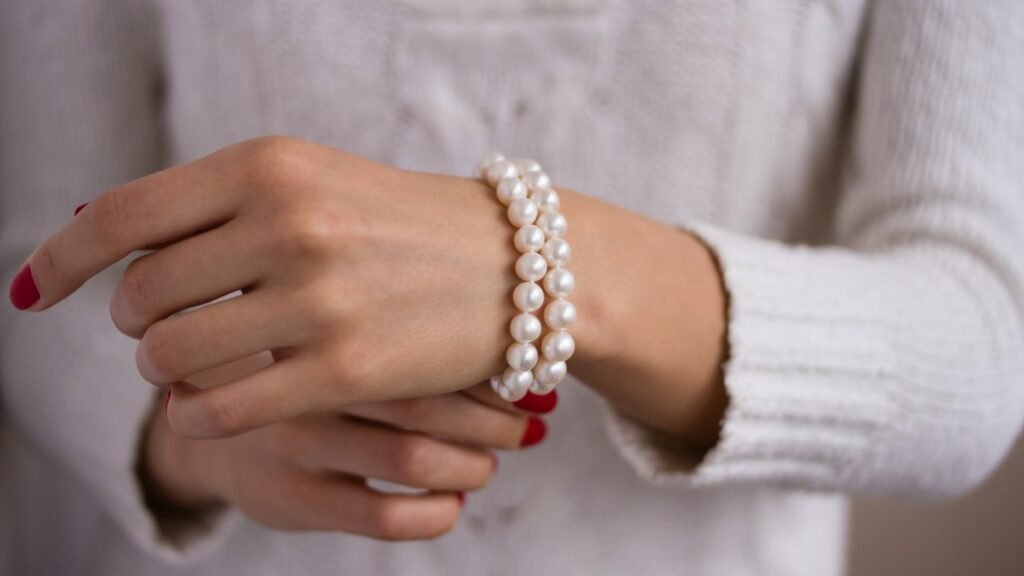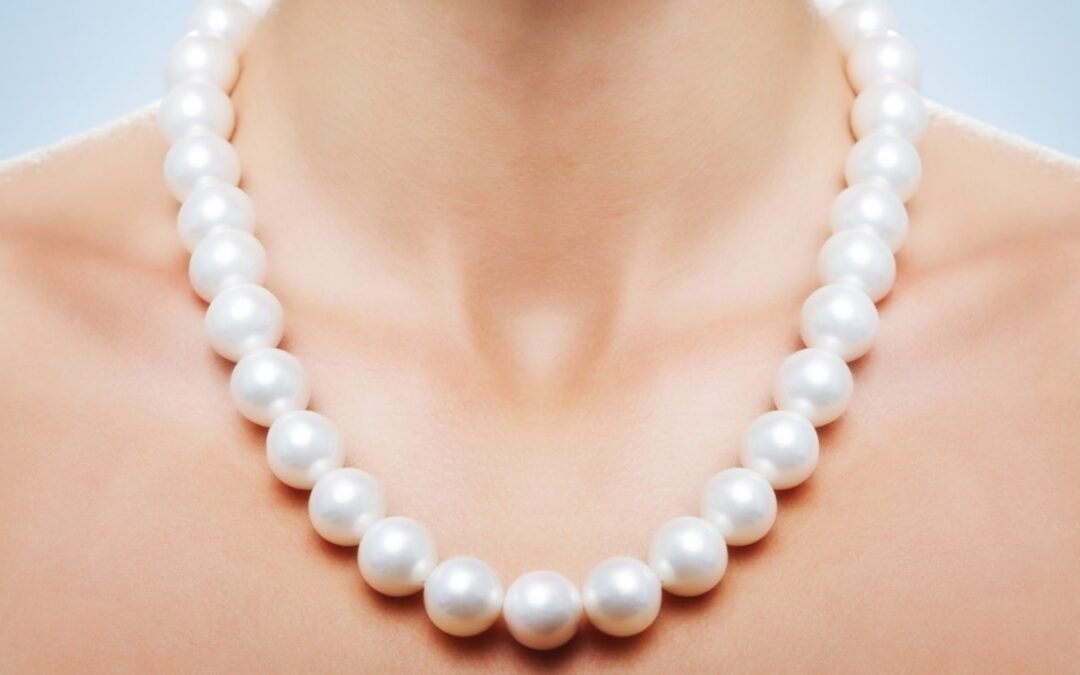Pearls, often referred to as the “Queen of Gems,” have been cherished for centuries due to their timeless beauty, rarity, and cultural significance. Whether worn as a delicate necklace or an elegant pair of earrings, pearls exude a sense of luxury and sophistication. But what is it that makes pearls so expensive? In this article, we will explore the factors that contribute to the high price of pearls, from their natural formation to the meticulous cultivation processes and the influence of market demand.
1. The Natural Formation Process
Pearls are unique because they are the only gems formed inside a living organism, usually oysters or mussels. The natural process by which a pearl is created is a rare and lengthy event, involving the following stages:
- Irritant Introduction: Pearls are formed when a foreign substance, such as a grain of sand or a parasite, enters the mollusk’s shell. In response, the mollusk secretes layers of nacre (a crystalline substance made of calcium carbonate and conchiolin) to coat the irritant.
- Nacre Layering: Over time, the mollusk continues to deposit layers of nacre around the irritant, eventually forming a pearl. The longer the mollusk works on this process, the larger and more lustrous the pearl becomes.
- Natural vs. Cultured: While natural pearls (those formed without human intervention) are exceedingly rare, the majority of pearls on the market today are cultured, meaning that a technician introduces the irritant to the mollusk in a controlled environment. Despite this intervention, the pearl’s formation still takes years and involves natural biological processes, making it a slow and unpredictable endeavor.
The sheer rarity of natural pearls and the lengthy time it takes to cultivate cultured pearls contribute significantly to their price. A pearl may take anywhere from six months to several years to form, and even then, there is no guarantee it will meet the high standards required for fine jewelry.
2. Pearl Cultivation is Labor-Intensive and Time-Consuming
Cultivating pearls is a meticulous and labor-intensive process, particularly in the case of high-quality freshwater and saltwater pearls. Pearl farmers must carefully select and prepare mollusks, monitor them during the nacre-depositing process, and ensure that the conditions are just right to produce pearls with desirable qualities such as luster, size, and shape.
- Hatchery and Implantation: In cultured pearl farming, mollusks are bred in hatcheries. Once they reach maturity, a small piece of mantle tissue or a bead nucleus is inserted into the mollusk’s body, triggering the pearl formation process.
- Nurturing and Monitoring: Farmers must carefully monitor water quality, temperature, and other environmental factors to ensure the health of the mollusks and the quality of the pearls. Diseases, pollution, or poor water conditions can lead to loss of stock and damaged pearls.
- Harvesting: After a period of several months to years, the mollusks are opened, and the pearls are carefully extracted. Each mollusk may produce only one or a few pearls, and not all pearls will be of high enough quality to be sold for jewelry.
Because this process involves significant human labor, expert knowledge, and the risk of unsuccessful yields, the costs of production are reflected in the final price of pearls.
3. Quality Grading and Rarity of Fine Pearls
Not all pearls are created equal. The price of a pearl is influenced by several quality factors, including size, luster, surface quality, shape, and color. Fine pearls are those that exhibit superior traits in one or more of these categories:
- Luster: Luster refers to the way light interacts with the surface of the pearl. High-quality pearls have a bright, sharp luster that gives them a mirror-like reflection. Pearls with a weak or dull luster are less valuable.
- Surface Quality: Pearls with fewer surface blemishes (such as spots, pits, or wrinkles) are more valuable. Flawless or nearly flawless pearls are rare and therefore more expensive.
- Shape: Perfectly round pearls are the most sought-after, especially in necklaces where uniformity is key. However, pearls come in various shapes, such as oval, drop, and baroque (irregular shapes). While baroque pearls can be stunning and unique, they tend to be less expensive than round pearls due to their asymmetry.
- Size: Larger pearls are rare because they take more time to form and require larger mollusks to cultivate them. As the size of the pearl increases, so does its value, especially if it retains high luster and a smooth surface.
- Color: Pearl color can range from classic white and cream to more exotic shades like black, pink, lavender, and even gold. While white and cream pearls are the most common, rare colors such as Tahitian black or South Sea golden pearls command higher prices due to their scarcity and unique beauty.
Because finding pearls that meet these high standards is challenging, premium pearls are relatively rare, making them more expensive.
4. The Influence of Pearl Type on Price

The type of pearl plays a critical role in determining its price. Different pearls come from distinct environments and undergo varied cultivation processes, which affects their rarity, quality, and ultimately their value. Pearl prices can vary widely, depending on their size, luster, color, and where and how they are cultivated. Below are the four main types of cultured pearls, each with unique characteristics and price points.
Akoya Pearls: The Classic Choice for High Luster
Akoya pearls are among the most iconic and widely recognized types of pearls, often associated with high-end jewelry. These saltwater pearls are primarily cultivated in Japan and China and are known for their smaller size, typically ranging from 6mm to 8mm. However, their defining characteristic is their exceptional luster. Akoya pearls have a brilliant, mirror-like surface that reflects light beautifully, making them a popular choice for fine jewelry. They usually come in classic shades of white or cream, with subtle rose or silver overtones, which enhance their elegance and appeal. Their near-perfect roundness and high luster make Akoya pearls especially sought after for luxury necklaces and earrings. Due to the time and care involved in their cultivation, as well as their desirable qualities, Akoya pearls are often priced higher than many other types of pearls of similar size.
South Sea Pearls: The “Rolls-Royce” of Pearls
South Sea pearls are considered some of the most luxurious and expensive pearls available. Cultivated in the warm waters of Australia, Indonesia, and the Philippines, South Sea pearls are renowned for their large size and thick nacre, often reaching sizes of 10mm to 15mm or more. These pearls exhibit a soft, satin-like luster that gives them a rich, sophisticated appearance. South Sea pearls typically come in shades of white, silver, and the rare and highly coveted gold tones, with golden South Sea pearls being particularly prized for their unique, radiant hue. The large size, silky luster, and rarity of South Sea pearls contribute to their high price. They are often referred to as the “Rolls-Royce” of pearls because of their exclusivity and premium quality, making them a favorite among collectors and luxury jewelry enthusiasts.
Tahitian Pearls: Exotic and Rare Black Pearls
Tahitian pearls, often referred to as “black pearls,” are cultivated in the lagoons of French Polynesia and are the only naturally occurring pearls that come in dark colors. These pearls are celebrated for their exotic hues, which range from dark black to green, blue, peacock, and charcoal. Their deep, rich colors and natural beauty make them stand out from other pearls, adding to their allure. Tahitian pearls typically range in size from 8mm to 14mm, and their unique coloration and rarity contribute to their higher price point. While they are not as lustrous as Akoya or South Sea pearls, their exotic, multi-colored overtones and organic beauty make them highly desirable. As a result, Tahitian pearls tend to be more expensive than other types, especially when they exhibit a strong luster and vibrant coloration.
Freshwater Pearls: Affordable Yet Diverse in Variety
Freshwater pearls are cultivated in freshwater lakes and rivers, predominantly in China, and are generally more affordable than their saltwater counterparts. Unlike saltwater oysters, which can typically only produce one pearl at a time, freshwater mussels can produce multiple pearls simultaneously, making them more abundant and therefore more affordable. Freshwater pearls come in a wider variety of colors, including white, peach, pink, lavender, and even metallic shades, and they are also available in a range of shapes, from round to baroque. While freshwater pearls often have a softer luster compared to Akoya or South Sea pearls, their beauty and diversity make them an attractive option for a wide range of jewelry designs. Premium freshwater pearls that exhibit a high luster, large size, and round shape can still command significant prices, especially as the quality of freshwater pearl cultivation has improved over the years.
5. Market Demand and Cultural Significance
The price of pearls is also influenced by market demand and their cultural significance. Throughout history, pearls have been symbols of wealth, purity, and wisdom, making them highly desirable among royalty, celebrities, and collectors. This cultural prestige has driven demand for fine pearls, particularly those that are rare or unusual.
- Cultural and Fashion Influence: In many cultures, pearls are passed down through generations as heirlooms or worn during significant life events such as weddings, symbolizing elegance and status. Celebrities and influencers also play a role in the popularity of pearls, driving demand for high-end pearl jewelry.
- Limited Supply: Because the production of premium pearls is limited, especially for rare types like South Sea or Tahitian pearls, their prices can fluctuate based on supply and demand. A limited supply of high-quality pearls increases their exclusivity and, consequently, their price.
6. Sustainability and Ethical Considerations
In recent years, there has been increasing interest in sustainable and ethical pearl farming practices. Ethical pearl farms emphasize environmental conservation, biodiversity, and fair labor practices. Maintaining high sustainability standards can increase the cost of production, but it also enhances the value of the pearls for consumers who prioritize responsible sourcing.
Moreover, as climate change and environmental degradation threaten the health of oceans and freshwater ecosystems, the future of pearl farming may face challenges. This potential scarcity could drive up prices further, making pearls even more of a luxury.
Buying Pearl Jewellery in Singapore
When investing in something as timeless and precious as pearl jewelry, it’s essential to choose a source that offers both quality and authenticity. At our shop in Singapore, we specialize in a curated selection of exquisite pearl jewelry, including necklaces, bracelets, and earrings, featuring the finest Akoya, South Sea, Tahitian, and freshwater pearls. Each piece is carefully crafted to showcase the natural beauty and uniqueness of these gems, reflecting their true value. Whether you’re seeking a classic pearl necklace or a statement piece, our collection offers a variety of styles to suit your taste. Buying pearl jewelry in Singapore from our shop ensures that you receive a high-quality product with unparalleled elegance and a commitment to authenticity, making your investment in these luxurious gemstones truly worthwhile.
Conclusion: The True Value of Pearls
Pearls are expensive not only because of their inherent beauty and rarity but also because of the labor-intensive and time-consuming processes involved in their creation. From the careful nurturing of mollusks in pristine environments to the meticulous grading and selection of the highest-quality pearls, every stage of pearl production adds value to the final product.
Moreover, the demand for pearls, influenced by their cultural significance and fashion trends, ensures that they remain a sought-after luxury item. Whether it’s the allure of a perfectly round Akoya pearl or the exotic beauty of a Tahitian pearl, owning a fine pearl is more than just purchasing jewelry—it’s acquiring a timeless piece of natural art.

